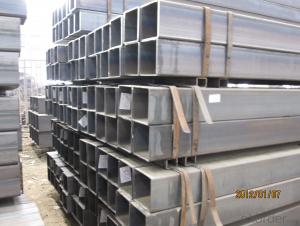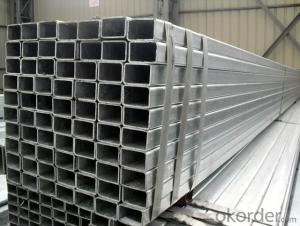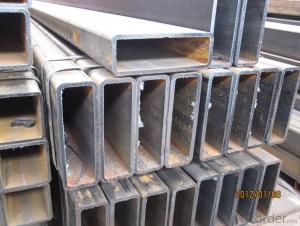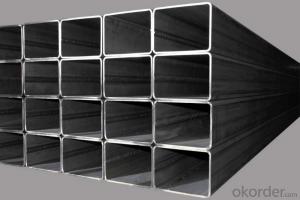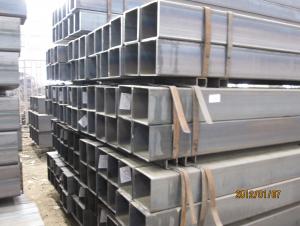Square Hollow Hot Rolled Steel Section
- Loading Port:
- China Main Port
- Payment Terms:
- TT or LC
- Min Order Qty:
- -
- Supply Capability:
- -
OKorder Service Pledge
OKorder Financial Service
You Might Also Like
Quick Details
| Thickness: | 1.0 - 35 mm | Section Shape: | Square | Outer Diameter: | 20*20-600*600 |
| Place of Origin: | Shandong China (Mainland) | Secondary Or Not: | Non-secondary | Application: | Structure Pipe |
| Technique: | Cold Rolled | Certification: | CE | Surface Treatment: | oil,paint |
| Special Pipe: | Thick Wall Pipe | Alloy Or Not: | Non-alloy | Name: | Square Hollow Steel Pipe/Tube |
| Shape: | Square/Rectangular | Yield Strength: | 360-380Mpa | Tensile Strength: | 560-580Mpa |
| Elongation: | 24-28% | Bend Test: | Qualified | Impact Value: | V-notch |
| Grade: | 20#,45#,16Mn,A210,St45,Q235,Q345,Q195,Q215,10#-45#,A53-A369,ST35-ST52,Q195-Q345 | Standard: | JIS G3465-2006,JIS G3466,GB/T 3094 |
Specifications
1.OD:15X15-800X800MM,20X30--600X800MM
2.Thick.:1.0--35.0MM
Square Hollow Section Image
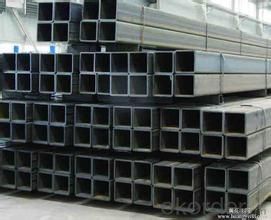
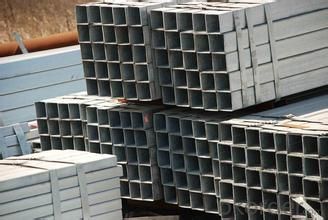
FAQ of Square Hollow Section
①How is the quality of your products?
Our products are manufactured strictly according to national and internaional standard, and we take a test
on every pipe before delivered out. Guaranteed: If products’ quality don’t accord to discription as we give or the promise before you place order, we promise 100% refund.
②How about price?
Yes, we are factory and be able to give you lowest price below market one, and we have a policy that “ for saving time and absolutely honest business attitude, we quote as lowest as possible for any customer, and discount can be given according to quantity”,if you like bargain and factory price is not low enough as you think, just don’t waste your time.Please trust the quotation we would give you, it is professional one.
③Why should you chose us?
Chose happens because of quality, then price, We can give you both.Additionally, we can also offer professional products inquiry, products knowledge train(for agents), smooth goods delivery, exellent customer solution proposals.Our service formula: good quality+good price+good service=customer’s trust
SGS test is available, customer inspection before shipping is welcome, third party inspection is no problem.
Any question, pls feel free to contact us !
- Q: Seamed steel pipe seamless steel pipe, carbon steel pipe, galvanized pipe, four how to distinguish between
- Welded and seamless steel pipe is divided according to the processing form, usually welded seam steel tube, seamless steel tube drawing and hot two ways, carbon steel is material, galvanized pipe is welded pipe production after the surface is galvanized
- Q: What are the quality control measures for steel pipe production?
- Quality control measures for steel pipe production typically include the inspection of raw materials, monitoring of manufacturing processes, and testing of finished products. These measures ensure that the steel pipes meet the required specifications and standards. Additionally, quality control may involve conducting visual inspections, dimensional checks, non-destructive testing, and mechanical testing to ensure the strength, durability, and overall quality of the pipes.
- Q: Are steel pipes suitable for underground mining operations?
- Yes, steel pipes are suitable for underground mining operations. Steel pipes are known for their durability, strength, and resistance to corrosion, making them ideal for use in harsh underground mining environments. They can withstand high pressure and are capable of transporting various substances, such as water, air, or mining materials, with reliability and efficiency. Additionally, steel pipes can be customized to meet specific mining requirements, ensuring their suitability for underground operations.
- Q: What is the difference between black steel pipes and galvanized steel pipes?
- The main difference between black steel pipes and galvanized steel pipes lies in their coating. Black steel pipes are uncoated and have a dark, iron oxide layer on their surface, while galvanized steel pipes are coated with a layer of zinc to protect against corrosion. This zinc coating gives galvanized pipes a shiny, silver appearance and makes them more resistant to rust and other environmental factors.
- Q: What are the different end finishes available for steel pipes?
- Some of the different end finishes available for steel pipes include plain ends, beveled ends, threaded ends, grooved ends, and flanged ends.
- Q: Are steel pipes suitable for fire protection systems?
- Yes, steel pipes are suitable for fire protection systems. They are highly durable and have excellent resistance to heat and fire. Steel pipes also have superior strength, making them suitable for carrying water or other fire suppressants at high pressure. Additionally, steel pipes have a long lifespan and are able to withstand different environmental conditions, making them a reliable choice for fire protection systems.
- Q: How are steel pipes used in the wastewater treatment industry?
- Steel pipes are commonly used in the wastewater treatment industry for various applications such as transporting wastewater, distributing chemicals, and constructing infrastructure such as treatment plants and pumping stations. The durability, strength, and corrosion resistance of steel pipes make them ideal for handling the harsh and corrosive nature of wastewater, ensuring efficient and reliable operations in the industry.
- Q: How do you transport and store steel pipes?
- Transporting and storing steel pipes requires careful planning and adherence to safety guidelines. Here are the steps involved in transporting and storing steel pipes: 1. Determine the appropriate mode of transportation: Depending on the quantity and weight of the steel pipes, you can choose between transportation by truck, train, or ship. Evaluate the distance, logistics, and cost-effectiveness of each option before making a decision. 2. Package and secure the steel pipes: Proper packaging is crucial to prevent damage during transit. Bundle the pipes together using steel strapping or banding. Ensure that the bundles are secured tightly to prevent any shifting or movement during transportation. 3. Use appropriate lifting equipment: When loading and unloading the pipes, use suitable lifting equipment such as cranes, forklifts, or hoists. Ensure that the equipment is capable of handling the weight and length of the pipes safely. 4. Protect against moisture and corrosion: Steel pipes are susceptible to moisture and corrosion, which can weaken their structural integrity. Before transportation, apply a protective coating or wrap the pipes with waterproof materials. Additionally, consider using moisture-absorbing desiccants or placing the pipes on pallets to elevate them off the ground. 5. Plan for safe storage: If storing the steel pipes for an extended period, choose a dry and secure location. Ensure that the storage area is well-ventilated and free from direct exposure to sunlight, rain, or extreme temperatures. Use racks or pallets to keep the pipes off the ground and prevent contact with moisture. 6. Inspect for damage: Before transportation and after storage, conduct thorough inspections to identify any damage or signs of corrosion. This will help you address any issues promptly and ensure the integrity of the steel pipes. Remember to comply with local regulations and safety guidelines specific to your region when transporting and storing steel pipes. By following these steps, you can ensure the safe and efficient transportation and storage of steel pipes, minimizing the risk of damage and maintaining their quality.
- Q: Are steel pipes suitable for oil and petroleum applications?
- Yes, steel pipes are highly suitable for oil and petroleum applications. They possess excellent strength, durability, and resistance to corrosion, making them ideal for transporting and storing oil and petroleum products. Steel pipes can withstand high pressure and extreme temperatures, ensuring the safety and efficiency of oil and petroleum operations.
- Q: What is the difference between schedule 10 and schedule 40 steel pipes?
- Schedule 10 and schedule 40 steel pipes are both commonly used in various industries for different purposes. The main difference lies in their wall thickness and pressure ratings. Schedule 10 steel pipes have a thinner wall compared to schedule 40 pipes. This means that schedule 10 pipes have a smaller internal diameter and can handle less pressure compared to schedule 40 pipes. The wall thickness of schedule 10 pipes is typically 0.109 inches, while schedule 40 pipes have a wall thickness of 0.154 inches. Due to their thinner walls, schedule 10 pipes are primarily used for low-pressure applications such as domestic water supply, drainage systems, and general plumbing. They are also commonly used for lightweight structures or where weight is a concern. On the other hand, schedule 40 pipes are designed to handle higher pressure and are often used in industrial applications, including oil and gas pipelines, chemical processing plants, and high-pressure fluid systems. The thicker walls of schedule 40 pipes provide them with increased strength and durability to withstand higher pressure and stress. In summary, the main difference between schedule 10 and schedule 40 steel pipes is their wall thickness and pressure ratings. Schedule 10 pipes have a thinner wall and are suitable for low-pressure applications, while schedule 40 pipes have a thicker wall and can handle higher pressure. It is important to choose the appropriate schedule based on the specific requirements and pressure limitations of the intended application.
Send your message to us
Square Hollow Hot Rolled Steel Section
- Loading Port:
- China Main Port
- Payment Terms:
- TT or LC
- Min Order Qty:
- -
- Supply Capability:
- -
OKorder Service Pledge
OKorder Financial Service
Similar products
Hot products
Hot Searches
Related keywords
